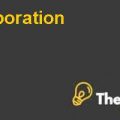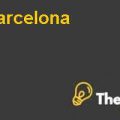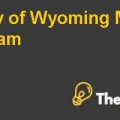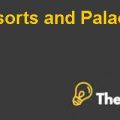
Nestle S.A.: International Marketing (A)
Facts of the case:
Nestle is known to be one of the companies with having largest foods and nutrition in the world. The company was founded in 1905 and headquartered in Vevey, Switzerland. Nestle was founded after the merger between two international companies named as Anglo-Swiss Milk Company and FarineLactee Henri Nestle Company. The major growth of the company was done in between the first world war and then in the post second world war era. As of now, the operation of the company has been expanded into more than 86 countries in the world. In addition, the company is known to be the major beverage and food company internationally. The company has its manufacturing and operational facility in almost all the countries worldwide. The company is known to be the most multinational company in the world.
Customers:
Products from Nestle is for everyone. People from any area, any culture and any age group will find products from Nestle that can fulfil their needs and demands. The company has not targeted its brand as a luxury one that can only be used by a few specific individuals. From young to old age individuals, everyone is using Nestle products all around the world. The customers of the company are present in all the six continents of the world.
Competitors and external analysis:
Primary competitors of the company include Kraft foods, Unilever and Procter & Gamble. The rivalry between these companies is getting intense day by day. Other than that, economic and political factors are extremely important to consider in the food industry. Nestle has to deal with quality management in the countries where the operations of the company are in place and thus need to manage the political rules and regulations of the respective country.
Company Strengths, Weaknesses, Priorities:
The company is enjoying high brand recognition and image for more than 14 decades. The company is offering thousands of local products, research and development capabilities. Moreover, the company has a strong workforce in nearly all the countries where the company is operated. On the contrary, the company has entered into many segments that have been matured and leaning towards a declining stage in the product lifecycle curve. Additionally, the company has the opportunity because people have become more health conscious.
Problem Statement:
Initially, the philosophy at Nestle for global expansion was based on operating companies with their local management. However, several incidents happened that evaluates that the company needs to change its philosophy. Many of the observers believed that as the market is emerging, there is a need for more centrally coordinated marketing approach. They believe this approach would help the company to gain economies of scale and reduce cost. The marketing counselor has to make two decisions about the company. First, the marketing department of the company needs to make policies and programs that ought to be more centrally coordinated and harmonized. The second dilemma that a company needs to address was whether or not to persuade nestle operating companies in France and West Germany to accept the same package for a product that had been launched successfully in both countries in 1981 in distinctly different packages and under different brand names.
Alternative development:
Alternative 1: Maintain the statues-quo.
Alternative 2: centralize what is possible and decentralize what they can.
Alternative 3:centralized packaging and advertising.
Decision criteria:
The decision criteria evaluation matrix has been formed through which all the alternative will be rated and weighted against certain criteria. These criteria include the impact of the chosen alternative on environment, value, cost, benefits and resources of the company. The option with having the maximum total score is the most desirable one.
Alternatives evaluation:
|
Alternatives |
|||||||
|
Status quo |
Centralize what is possible and decentralize what they can |
Centralized packaging and advertising |
|||||
|
Criteria |
Weight |
Ranking |
Total |
Ranking |
Total |
Ranking |
Total |
|
Environment |
0.2 |
2 |
0.4 |
4 |
0.8 |
1 |
0.4 |
|
Value |
0.2 |
2 |
0.4 |
3 |
0.6 |
2 |
0.8 |
|
Cost |
0.3 |
1 |
0.3 |
3 |
0.9 |
3 |
0.9 |
|
Benefit |
0.1 |
2 |
0.2 |
5 |
0.5 |
2 |
0.4 |
|
Resources |
0.2 |
2 |
0.4 |
5 |
1 |
2 |
0.8 |
|
1 |
1.7 |
3.8 |
3.3 |
||||
The matrix has been shown that the company needs to opt for the second alternative, i.e. centralizing what is possible and best suited and keep things decentralize if it has given appropriate returns. Among these three alternatives, the highest score has achieved by........................
This is just a sample partial case solution. Please place the order on the website to order your own originally done case solution.
Senior manager at the headquarters of Nestle is reviewing the role of the central office of marketing to the Nestle operating companies around the world. Two specific examples of the role of the central office in the management of advertising and packaging solutions operating companies represented. "Hide
by John A. Quelch, Edward J. Hoff Source: Harvard Business School 29 pages. Publication Date: September 24, 1984. Prod. #: 585013-PDF-ENG











